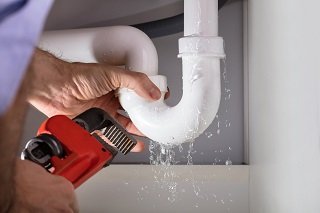
When you buy a home, you might not buy a brand new home, or build one from scratch. Often, people buy homes built and lived in by others. They then bring the property up to their specifications. If you fall into the latter category, you’ll likely have fun updating and refurbishing your new space. However, because it might be an older property, you will have to keep a shrewd eye out. Because someone else has lived there, various pre-existing damages might show up. What are some of these? What can you do about them?
Understanding Damage Risks in Existing Homes
All homes, no matter how sturdy they are, will have breakdowns from time to time. They’ll also see a fair amount of wear and tear as the years go by. If left alone for too long, small problems might become large ones. They might threaten the homeowner, or even a new party who is buying the home.
Homes often face even higher damage risks if they sit empty. Without someone in the home, there is not anyone there to notice if problems develop. So, if a home has sat empty for a time, then it might have developed issues in that interval. Home buyers should beware this potential issue when they contemplate making an offer.
Often, you can find out about property damage risks before you take possession of the home. Therefore, you’ll likely be able to eliminate them early as well. By doing so, you can move in without having to worry about existing issues. That might help you, and your own homeowners insurance risks, quite a lot.
Existing Risks
Over time, a variety of deterioration or damage might occur in a house for sale. If the previous owner did not know about these risks, then they might stick around and even become worse. Some of these might include:
- Gutter and drainage issues: Some homes do not have gutter systems along the roof line. That might raise the risk of water damage in the home. Even if the home does have drains, they could become clogged, and water damage risks might still apply. Drainage systems under or around the home might also become clogged or damaged as well.
- Broken appliances: A previous owner might leave items like refrigerators or dishwashers behind. Air conditioning systems and heat pumps will usually remain with the property. If these items begin to wear out, they might pose damage risks.
- Bad electricity: You cannot see a home’s electrical wiring. It might have damage that no one knows about. If left unattended, fire and electrical failure risks might beckon. Homes with old wiring might even fail to meet current electrical code standards. Someone might have to replace all or part of the system.
- Plumbing issues: Depending on the type of plumbing in the home, its lifetime will vary. Over time, most metal pipes can rust, corrode or deteriorate. The risk of leaks, burst pipes and water waste could go up. Problems could occur in the kitchen, bathrooms, and indeed any room near where piping runs.
- Foundation problems: Most foundations and home structures shift over time. At times, the home’s structural integrity might even come under threat. Shifting foundations might cause structural cracks and increase collapse risks.
- Mold and pest risks: Anywhere there is moisture, mold might form. Wherever there is an opening into the home, pests like termites could enter. Such biohazards might cause significant health risks to occupants. They will also often cause problems to the home’s structural reliability.
Problems like these are why, before moving in, you will likely have to have a home inspection. The inspector will look at critical home systems to determine if it is safe to inhabit. Then, if necessary, they will recommend or require repairs to occur. After repairs occur, you can worry less about lurking hazards
Who Has to Pay for Repairs
If you find problems in the home, you might feel that you, as the buyer, have no responsibility to pay for repairs. You didn’t live in the home when they occurred, after all. They are not your fault. You might want the current or previous homeowner to pay for them.
Depending on the deal that buyers and sellers make, the party who pays for repairs might vary. Sometimes, the owner will agree to make repairs before you move in. Other times, the seller might sell the home as-is. That basically means that the responsibility for repairs falls on the buyer. However, keep in mind, you will have to pay for elective improvements you decide to make to the home.
Your home insurance will likely not pay for damage to the home resulting from normal wear and tear. Furthermore, policies usually won’t cover damage that occurred before the policy started. Strive to take care of any problems in your prospective home before taking possession of the property.
